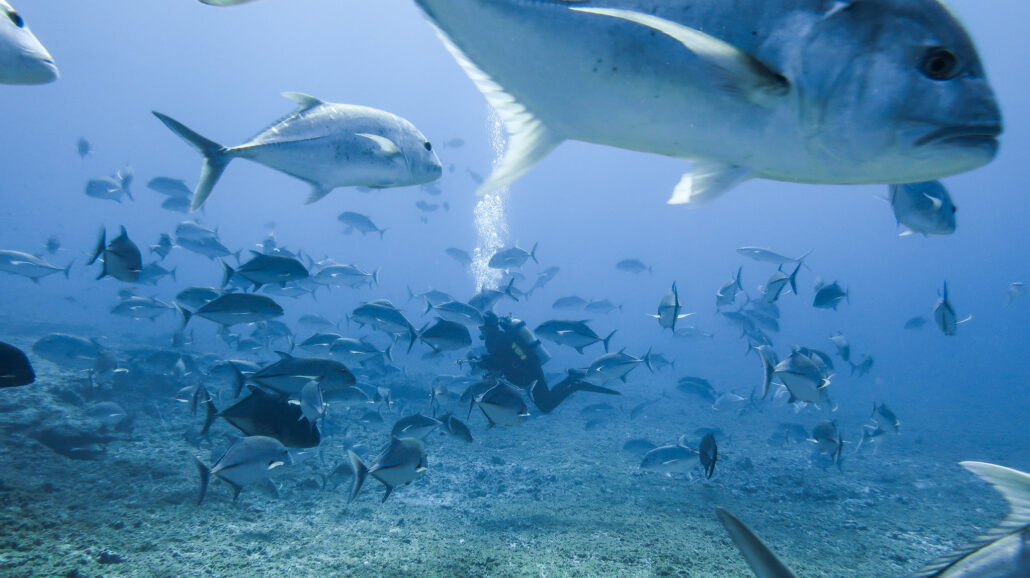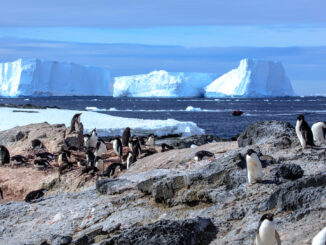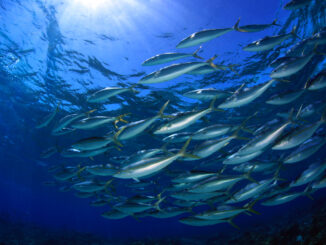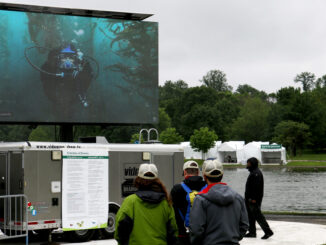
Conservation policies such as marine protected areas and enforced fishing restrictions barely cover 10% of global reef fish stocks worldwide, according to a new assessment.
This is despite government commitments to place at least 30% of the world’s coastal and open marine areas under protection by 2030, just a little over five years away.
With just 10% of coral reef fisheries enjoying some protection globally, scientists fear that governments’ stated efforts to conserve marine biodiversity are falling flat.
“This contribution appears quite modest,” said Joshua Cinner, a geography professor at the University of Sydney and one of the lead researchers behind the new assessment, “and our study makes clear just how much room there is for improvement.”
Cinner and his colleagues Iain Caldwell, Tim McClanahan, and Remy Oddenyo published their findings yesterday in the Proceedings of the National Academy of Sciences. Their assessment factored in about 2,600 coral reefs located across the world.
Weak conservation coverage
Modeling how these regions are fished and the various government conservation regimes they are placed under, the researchers concluded that only about 10% of the fish stocks calling these reefs home are protected in some way.
That leaves the remaining 90% to be exploited in the absence of strong protections, like the establishment of fishing no-go zones such as marine protected areas (MPAs).
Over half of the coral reef systems included in the study were not placed under any type of conservation regime, meaning “no constraints on fishing at all” at these reef sites.
The authors acknowledged that MPAs currently cover only about 8% of the world’s ocean area.
They see solid evidence of conservation success where MPAs exist, but their study demonstrates vividly how, despite the MPA movement, the vast majority of reef fisheries remain exposed to overfishing and potential fishery collapses.
Famous examples of overfishing leading to disaster include the collapse of the cod fishery off Newfoundland in Canada and the decimation of the North Atlantic bluefin tuna fishery by Norwegian fishing fleets.
Collapses of coral reef-dependent fish stocks are rarer but not impossible.“Our modeling showed that we could get up to 28 percent more fish on coral reefs globally by increasing the coverage of fully protected reefs to 30 percent,” Cinner said in an overview of his team’s findings, “but only if these reefs are chosen strategically.”
Expanding the MPA network
More MPAs could be established between now and 2030.
In recent years and months governments have announced plans for establishing marine sanctuaries within their territories. For example, during the recent Paris Olympics, the government of France announced ambitious plans to create MPAs across much of its coastlines.
Meanwhile, delegates at the United Nations are negotiating the creation of MPAs in international waters.
The International Whaling Commission could be moving to establish a South Atlantic Ocean whale sanctuary, despite the decades-long moratorium on commercial whaling already in force.
Parties to the UN Convention on Biodiversity are still negotiating the creation of the world’s first MPA on the high seas. Currently, the only formally established MPA found in international waters exists in the waters surrounding Antarctica.
Conservationists generally press governments to ban any and all types of fishing from areas they declared to be MPA. Iain Caldwell, a co-author of the new study and researcher with the Wildlife Conservation Study, says it’s possible to meet fishing interests halfway.
This kind of softer approach could be critical for groups trying to establish some protections for reef fisheries. They’ll need buy-in from the local communities that depend on these reef fish for their survival, Caldwell argues.
“No-take zones are punching above their weight, especially when they are well complied with, but they aren’t the only way to increase fish populations,” he said. “Other forms of fisheries management can also be effective and may be more amenable for people who depend on reef fish for their lives and livelihoods.”
MPAs are good for fishing, too
There’s solid evidence that establishing strongly protected MPAs improves fishing success in areas near these no-fishing zones.
Researchers from the University of Hawaii at Manoa recently discovered that MPAs generate a positive spillover effect for adjacent seas where fishing is permitted.
Other localized studies have also found a positive spillover effect as abundant fish populations emerge from MPAs to other areas where fishing is permitted. The UH study discovered how this spillover effect can be seen worldwide.
In addition to improving fishing volumes, UH marine scientists say MPAs also help anglers catch bigger fish, including record breakers.
©2025 Public Parks



